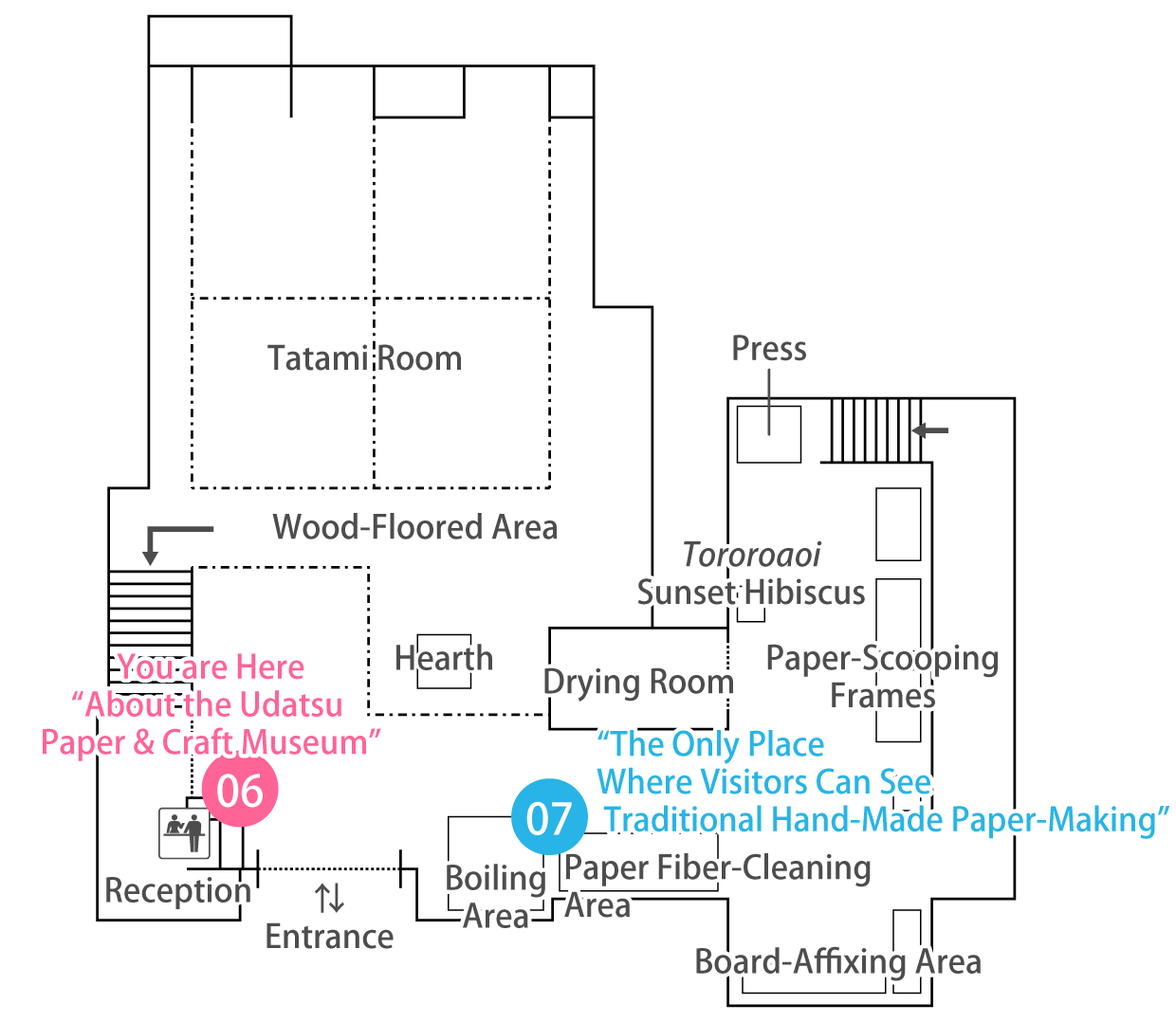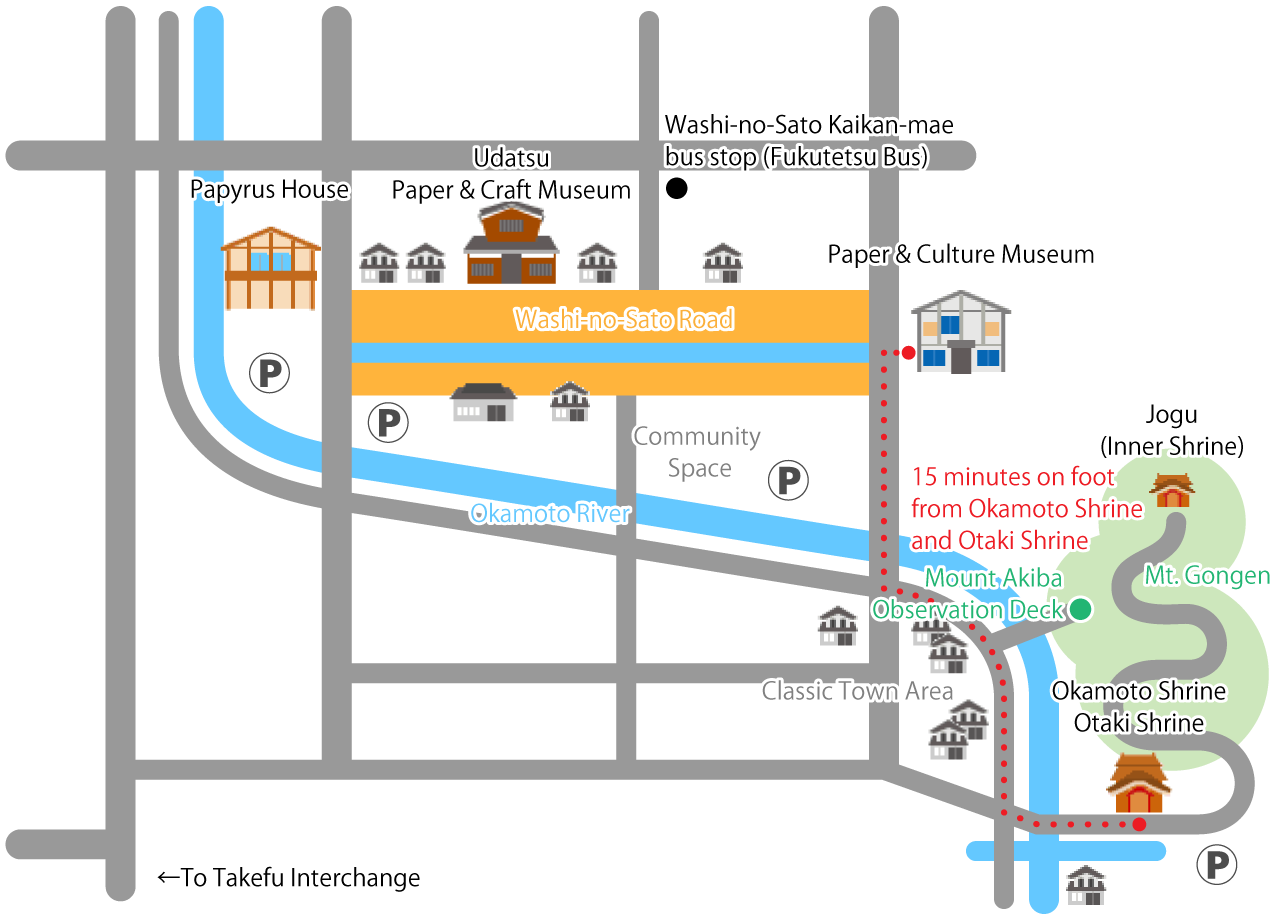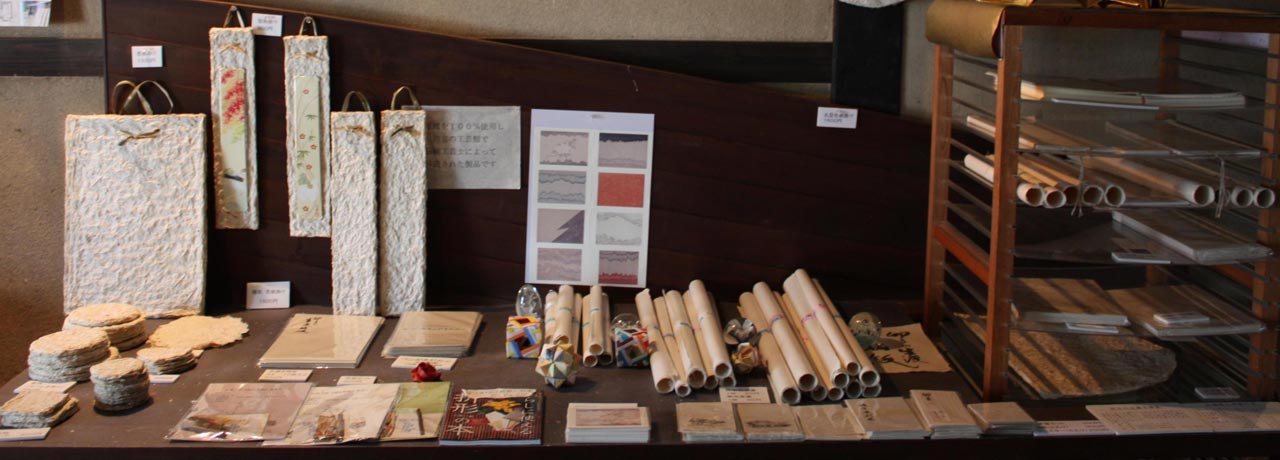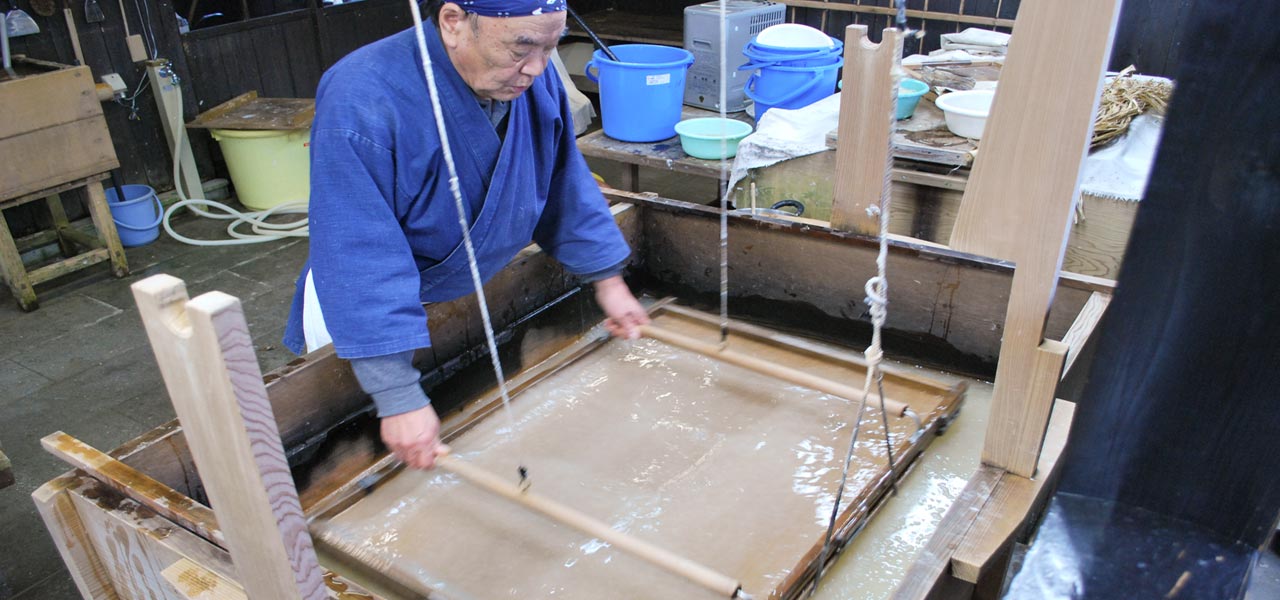 |
[06] About the Udatsu Paper & Craft Museum |

| This establishment features info points at the numbered locations shown on this map, where you can get more information through the Trip Guide Fukui app. |

|

| Map of the Echizen Washi Village area |

|

The Only Place in Japan Where You can Watch the Washi Paper-Making Process |

|
The Udatsu Paper & Craft Museum is the only place in Japan where you can watch the entire washi paper-making process, from METI-designated traditional craftspersons using old-fashioned tools to make washi paper, to naturally sun-drying the paper outside.
The "Udatsu" comes from the tsuma-iri udatsu architectural style of the building, which was once the home to the famous Echizen washi paper-maker Heiuemon Nishino. The house is said to have originally been built in 1748, in the mid Edo era, and has since been moved to its current location and restored. In 2008, it was registered as a nationally designated Tangible Cultural Property.
|


|
|
In addition, the Udatsu Paper & Craft Museum features a shop where visitors can purchase washi paper, envelopes, note paper, paper strips, paper scrolls, paper trivets, paper coasters, and more, all made by the paper makers who work there.
|

| A House Where Paper-Making Was a Way of Life |

|
The tsuma-iri udatsu architectural style of houses is still seen even today, dotting the Goka area, home to Echizen Washi Village. The “tsuma” refers to the vertical triangular wall between the sloped ends of the gabled roof. The entryway of these houses is on the same side as the tsuma, lending them the name tsuma-iri, or tsuma-entrance. The “udatsu” part of the name refers to the small extra roof on the roof of the tsuma wall.
This architectural style is said to both be decorative and to protect against fires; in any case, with its distinctive look and feel, the style has come to represent paper makers’ pride and determination. |
This building was once the home of a paper maker in the Edo era, and visitors today can see a representation of what a typical floor plan at the time would have looked like, from the dirt floor of the entryway looking in at hearth and the wood-floored area, to the raised tatami room in back.
The dirt- and wood-floored areas were used as preparation areas for paper-making, and feature pots for cooking the paper ingredients. The drain and well, while useful for the kitchen, continue into the paper-making area as well.
The entrance faces south, ensuring plenty of sunlight for growing paper mulberry in the front garden and for the crucial job of drying paper. Additionally, gardens with good water supplies would also have a "river hut" built there, where people would do the work of preparing the paper ingredients, such as paper mulberry bark.
|

| The Traditional Tools and Skills Used by the Paper Makers |

|
|
The Echizen washi paper makers use restored traditional tools, in traditional ways, to make paper in the same way as long ago. Additionally, these paper-making masters perform every step by hand, from preparing the ingredients to forming the paper to drying it, and visitors can watch them work. |
|
The Udatsu Paper & Craft Museum is the only place in Japan where visitors can watch the entire old-fashioned paper-making process in one place - visitors can touch the history and tradition of Echizen that lives on in this beautifully unique paper maker's house, and watch as masters continue to polish their craft day after day. |

|

